Why Cornflowers Are The Must-Have Low-Maintenance Plant For Summer

ANNUALS > CORNFLOWER

Elizabeth is a Permaculture Garden Designer, Sustainability Consultant and Professional Writer, working as an advocate for positive change. She graduated from the University of St. Andrews with an MA in English and Philosophy and obtained a Diploma in Applied Permaculture Design from the Permaculture Association.
Reviewed By COLIN SKELLY

Colin is a Horticulturist and Horticultural Consultant with experience in a range of practical and managerial roles across heritage, commercial and public horticulture. He holds the Royal Horticultural Society’s Master of Horticulture award and has a particular interest in horticultural ecology and naturalistic planting for habitat and climate resilience.
Contributions From EMILY CUPIT

Emily is a Gardening Writer, Photographer and Videographer from Derbyshire, UK. She is the Founder of Emily's Green Diary - a community of more than 75,000 people who share in her gardening journey.
CORNFLOWER GUIDES
Cornflowers are beautiful additions to your garden, and can be a great choice for a meadow planting scheme or even placed in your vegetable garden.
When most people talk about cornflowers, they are talking about annual cornflowers, Centaurea cyanus, and it is these annuals that we are referring to in this article.
However, it is worth noting that there is also a perennial cornflower, Centaurea montana, and a range of other perennial Centaurea (knapweeds) which can be either herbaceous perennials or subshrubs – and these can also be great choices for your garden.
Overview
| Botanical Name | Centaurea cyanus |
| Common Name(s) | Cornflower, Bachelor’s Buttons |
| Plant Type | Annual |
| Native Area | Europe |
| Hardiness Rating | H6 |
| Foliage | Ovate, long, spiky leaves |
| Flowers | Commonly blue |
| Plant Out | May |
| Flowering Months | June, July, August, September |
| Deadheading Months | June, July, August |
Sunlight
Preferred
Mostly Full Sun
Exposure
Exposed or Sheltered
Size
Height
0.5 – 1M
Spread
0.1 – 0.5M
Bloom Time
May – September
Soil
Preferred
Most soil types
Moisture
Well-drained or moist but well-drained
pH
Any
Another common name for this plant is ‘Bachelor’s Buttons’.
It is a wildflower native to the UK which is very popular in cutting gardens and wildlife-friendly gardens.
This is a hardy annual, with an RHS hardiness rating of H6.
It grows up to around 75cm tall, and bears beautiful deep (usually blue) flowers in the late spring and summer months, from around June to August.

Once, cornflowers were common as a weed in cornfields – hence the name.
However, changes in agricultural practices mean that it is now very rare to find it growing naturally on farms.
Cornflowers are typically blue, but cultivars are also available in a range of other colours, from blues that are almost black, to pinks, reds and whites.
Why Grow Cornflowers?
Cornflowers are not only an attractive annual flower.
They are also extremely beneficial for attracting bees, butterflies and other useful insects to your garden.
This means that they can be helpful for organic gardeners.
Cornflowers are relatively easy to grow, and low maintenance – in the right location, they can often self-seed readily.
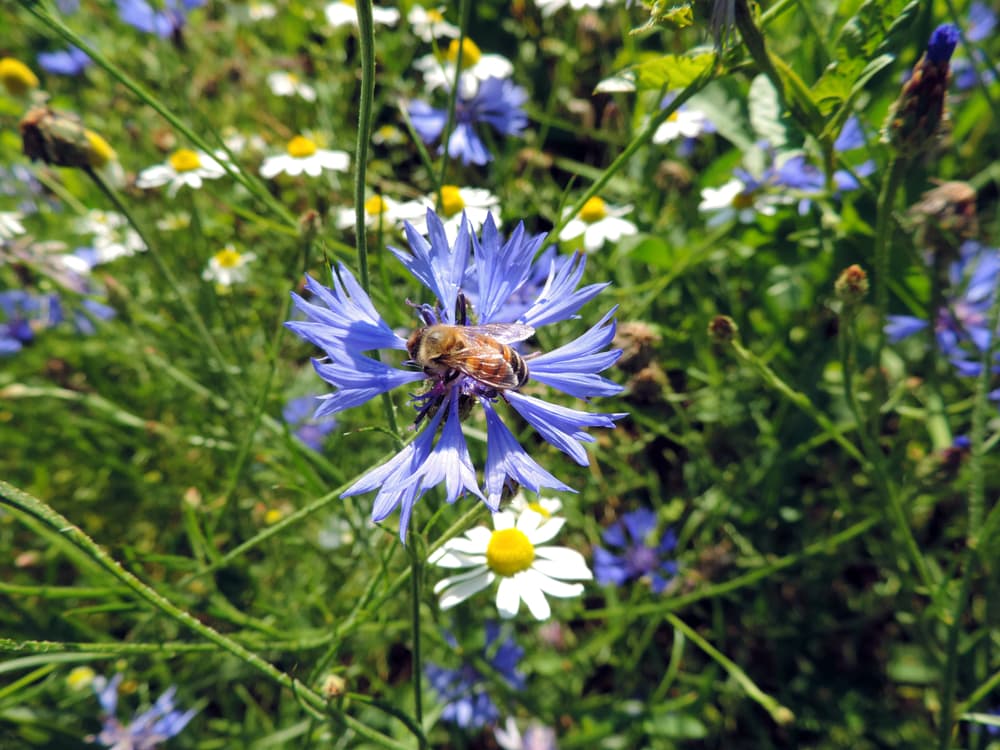
What is more, they can provide us with a yield as well as just look pretty.
You can eat the young shoots of cornflower, and the flowers can be added to a salad.
The flowers are also an ingredient in several popular tea blends, such as ‘Lady Grey’.
How To Grow Cornflowers
Cornflowers work very well alongside poppies and other hardy annuals in an annual wildflower meadow planting scheme.
Other native annuals for such a scheme include corn chamomile, forget-me-nots, wild candytuft, wild pansy and yellow rattle (which helps suppress grass growth).
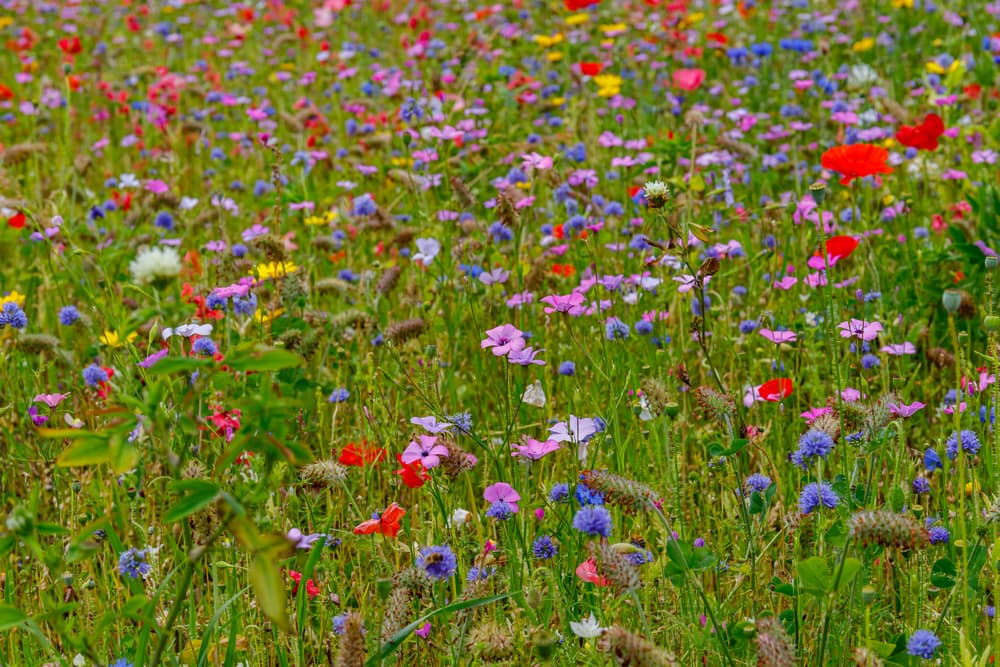
They can also be an excellent choice in more formal planting of annual flowers in a cutting garden.
Try planting them alongside marigolds, calendula, cosmos and zinnias, for example.
Reds, yellows and golds really bring out the blue of these flowers, but perhaps the very best way to place cornflowers in your garden is within your vegetable garden.
Cornflowers can be sown undercover in a greenhouse or indoors in March, and planted out in May, or they can be direct sown where they are to grow in April or May.
Sowing the seed directly is most common – germination rates will usually be good as long as the temperatures are between 10-16°C.

In areas where the winter does not get too cold, you can also sow cornflowers in an unheated greenhouse or polytunnel in September, for earlier flowers and larger plants the following year.
See this guide for more information on growing from seed.
Companion Planting
Since they are so good at attracting pollinators and other beneficial insects, they make excellent companion plants for a number of common annual crops – perhaps placed in pots or containers close to the main beds, or in a border along the edge of the kitchen garden area.
They can also do well in a bed with Mediterranean herbs or other plants which like free-draining conditions.
Soil Requirements
Cornflowers will thrive in a site in full sun in a well-drained loam or sandy soil.
They are unfussy when it comes to soil pH, even tolerating very alkaline conditions.
These flowers do not require nutritionally rich conditions and in fact, can do well even in low fertility conditions.
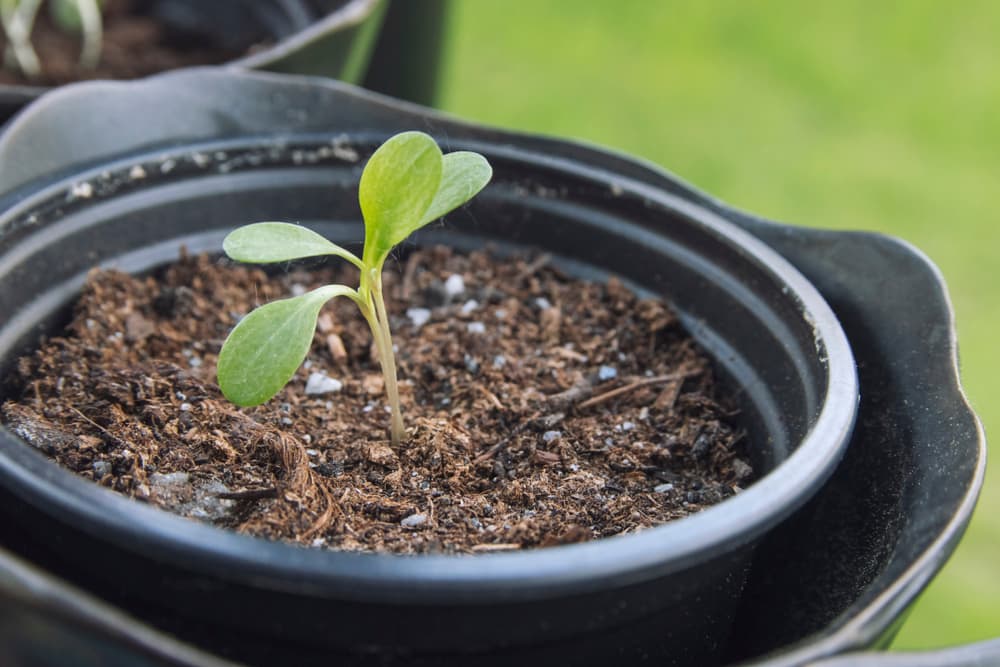
This means they can be placed in a sheltered or exposed location.
Plant Care
As mentioned above, these annual flowers require very little care.
They are a low-maintenance plant and can be a good choice for new gardeners, or when gardening with kids.
Watering
Over the summer, cornflowers should not require much additional watering, if any at all.
They are pretty tolerant of dry conditions and can handle some drought.
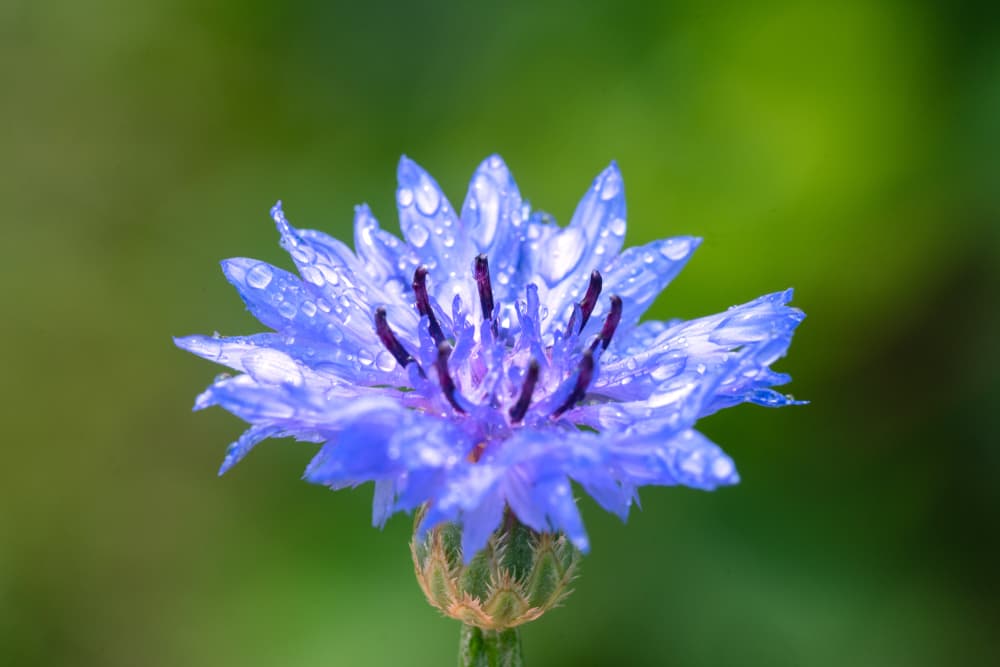
In fact, overwatering or too much rain can be more of a problem.
So make sure the soil or growing medium is draining freely.
Cutting
You can cut flowers to place in an arrangement inside your home – but be sure to leave some flowers for the bees and other insects who share your garden.
Cut off the flowers just above a node and they should send up new flowers to replace those you have taken.
You can enjoy the cornflowers you cut as fresh flowers, or you can dry them.
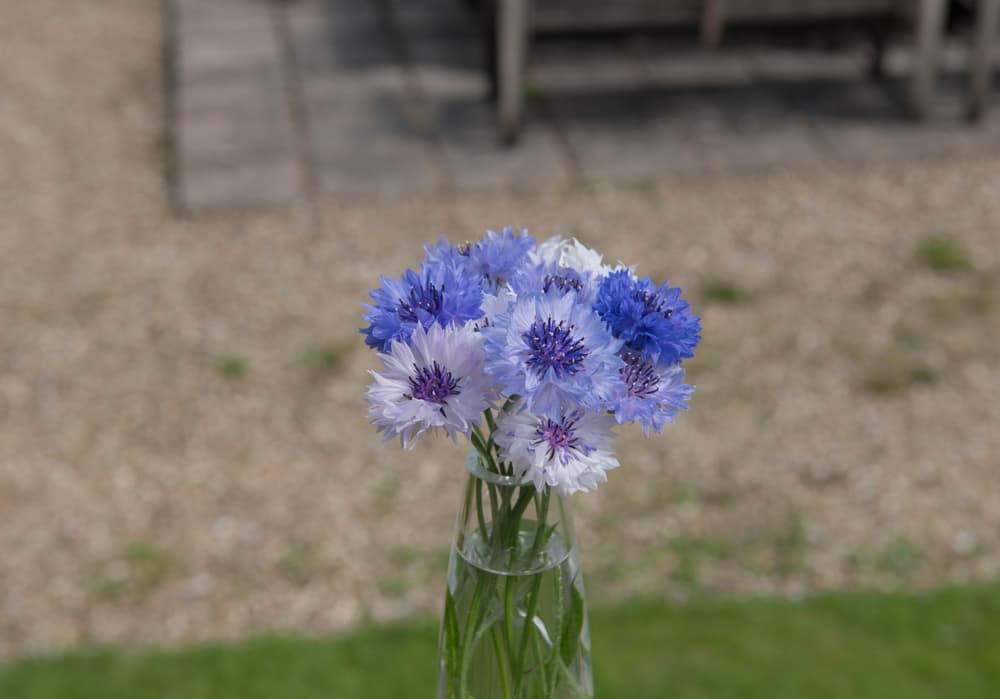
One good thing about drying cornflowers is that their blooms retain their colour well when dried.
Deadheading
Even if you are not making use of the flowers, you should remove spent flower heads.
Deadheading regularly through the late spring and early summer should mean that you get more flowers over the summer.
However, make sure that you stop deadheading as summer progresses, and let some of your plants go to seed.
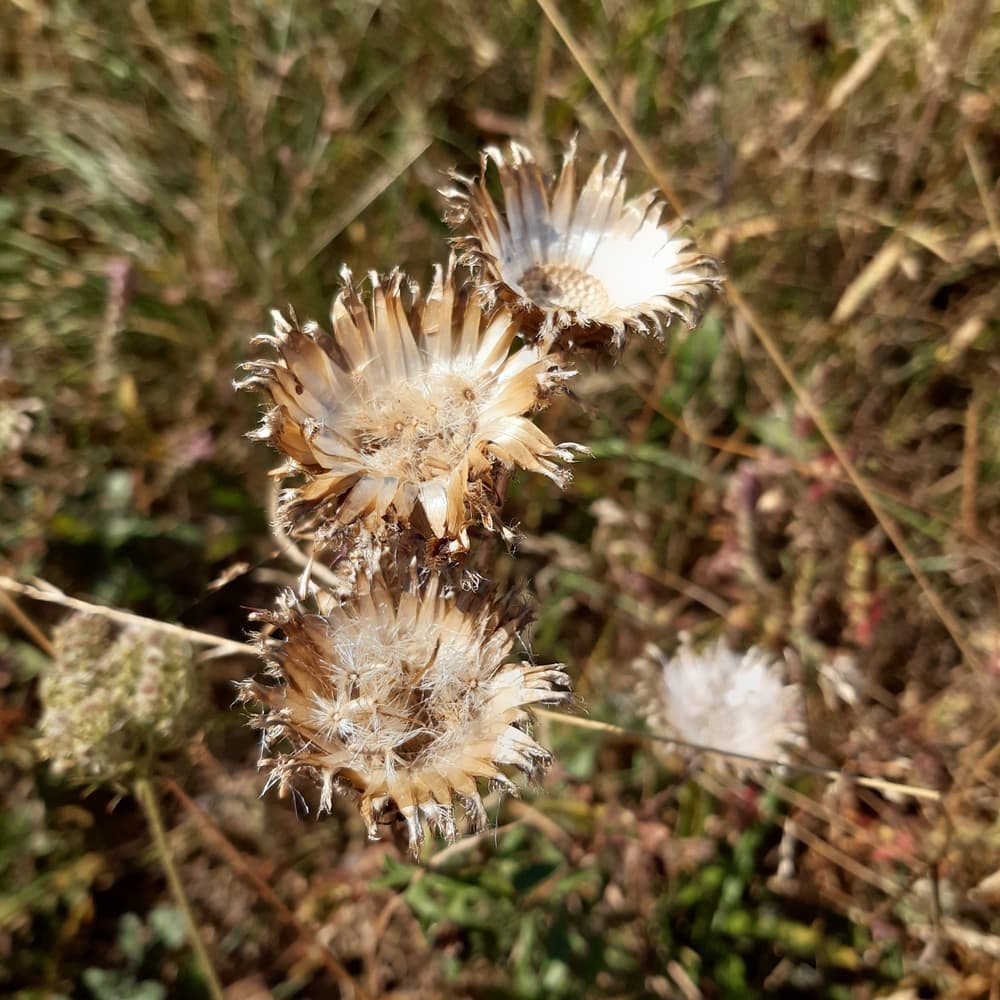
Not only is there the chance for self-seeding or seed collection for next year, the seeds are also attractive to birds, and make a good food source for several species.
Remember, these are annual plants, which will need to be re-sown (or allowed to self-seed) each year – but they can still be an excellent choice for many gardens in the UK.
Cornflower Varieties
You can purchase typical cornflower wildflower mixes, or wild cornflower seeds.
However, you can also consider opting for one of the named cultivars for different forms or different hues.
Some options to consider include:
‘Black Ball’

‘Blue Ball’
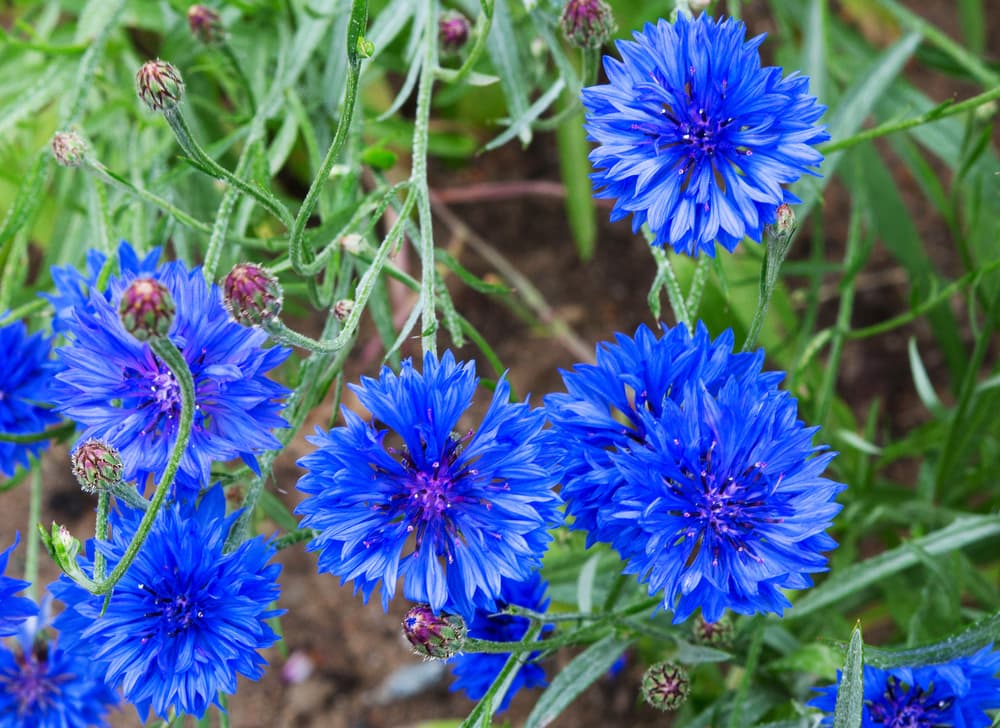
‘Blue Diadem’
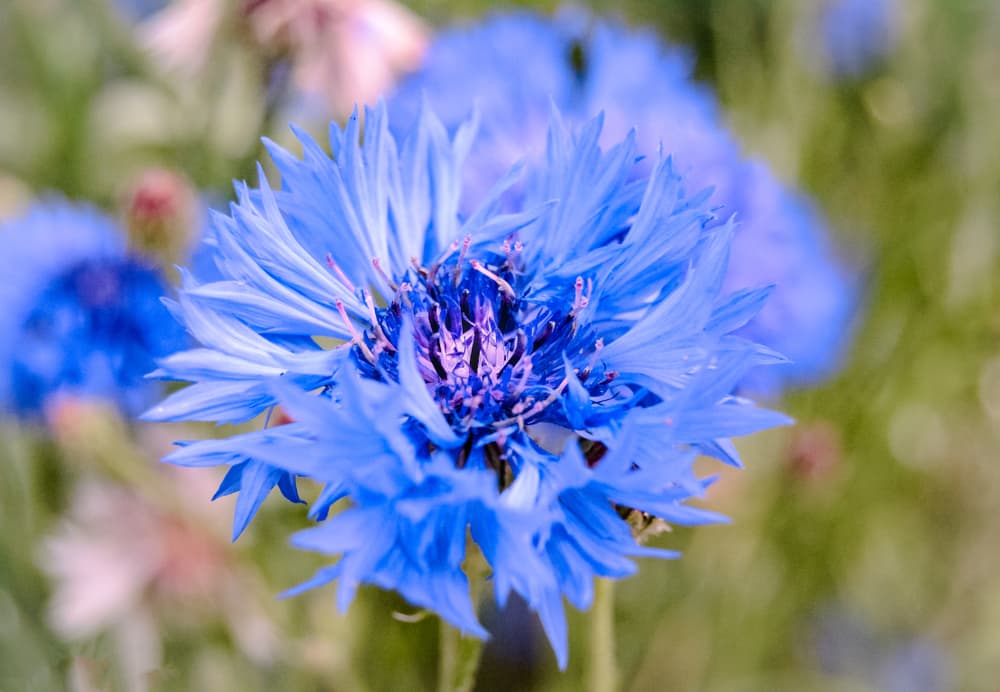
‘Classic Magic’
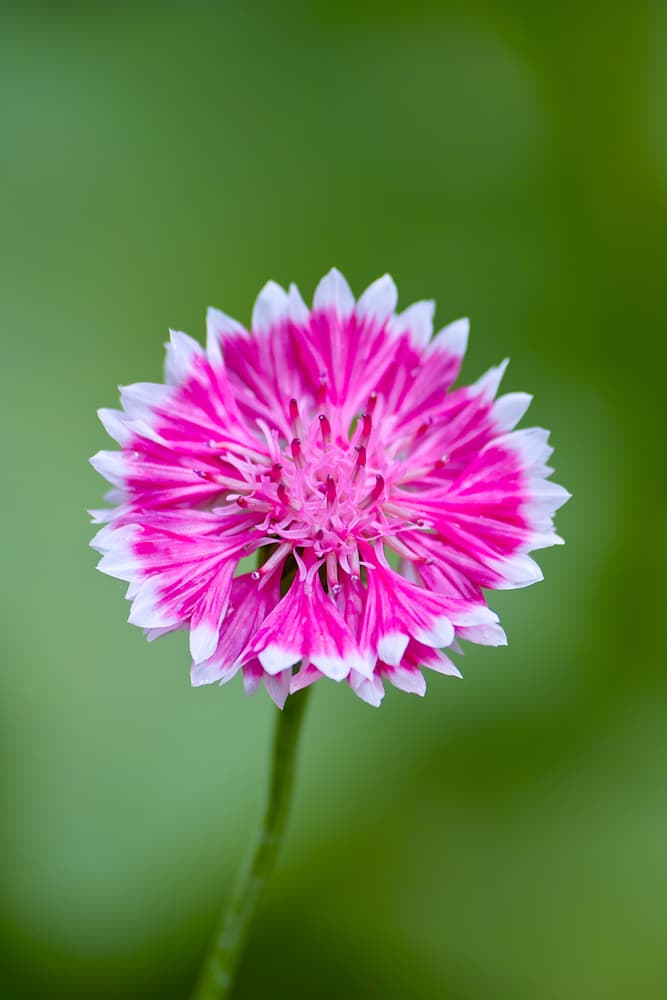
A range of shades from deep, dark purple to lilac, bi-colour and white.
‘Double Blue’
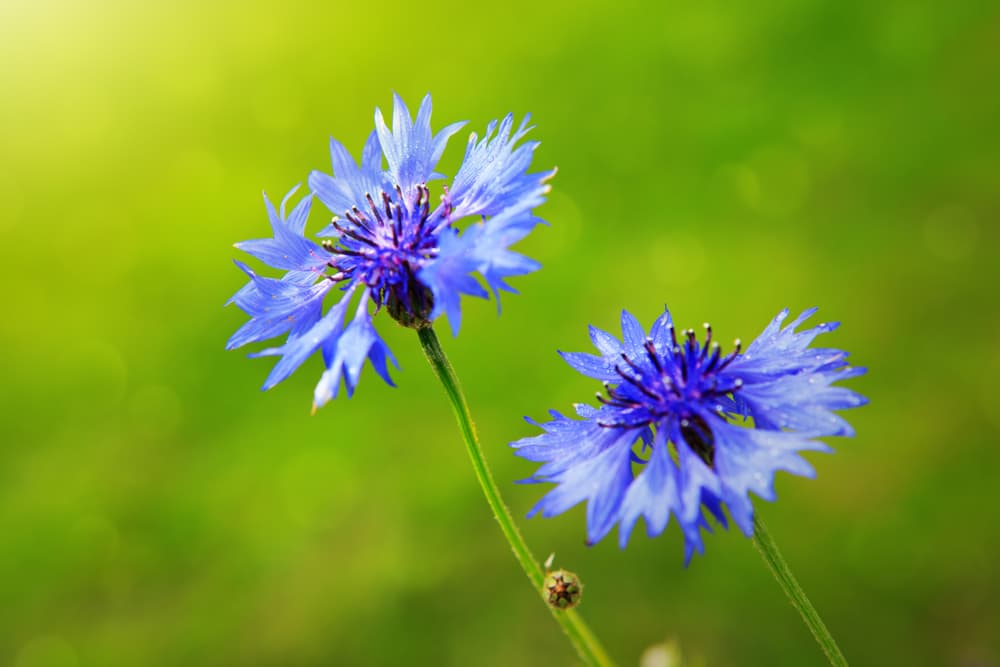
‘Midget Blue’

Dwarf C. cyanus with blue flowers, perfect for the front of borders or containers.
